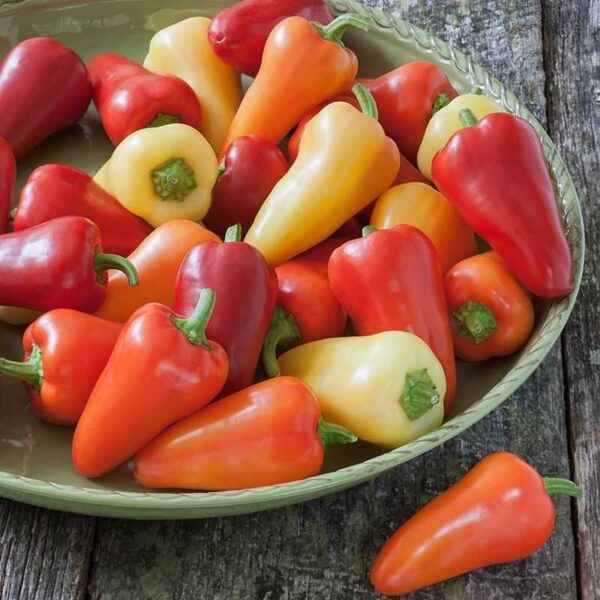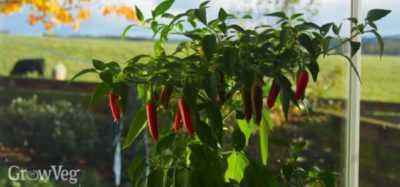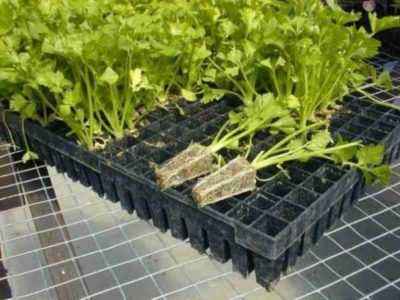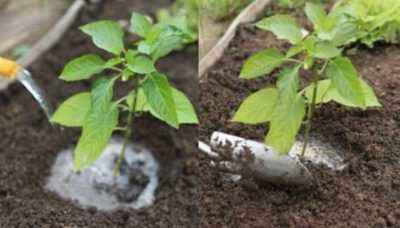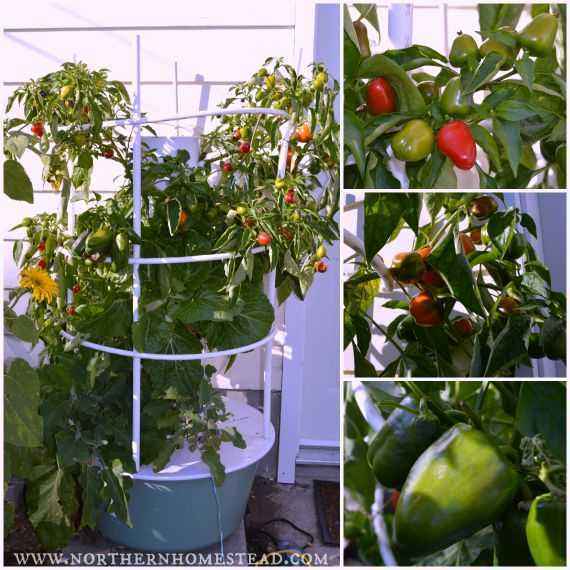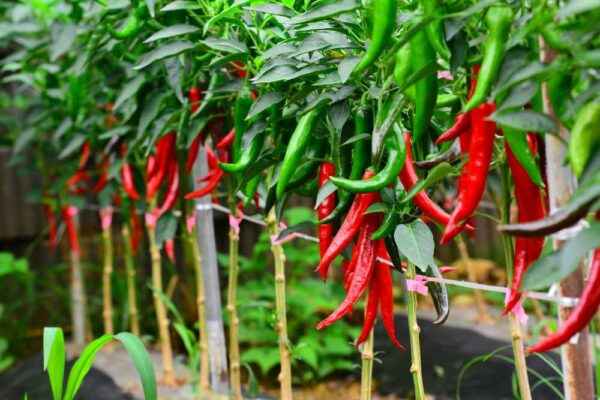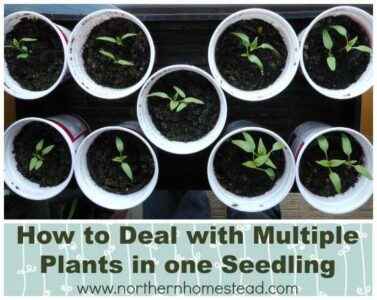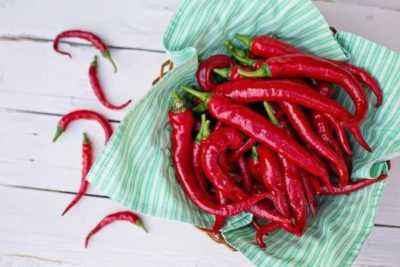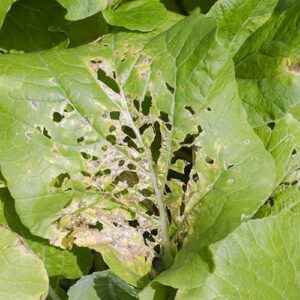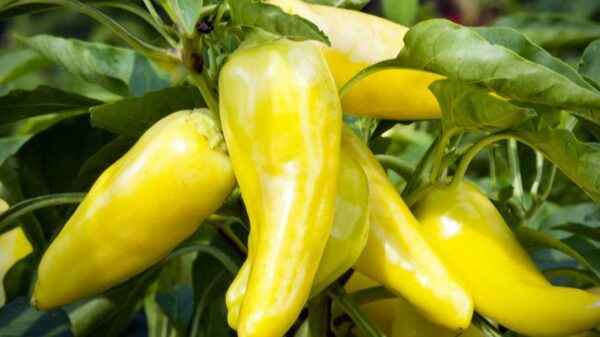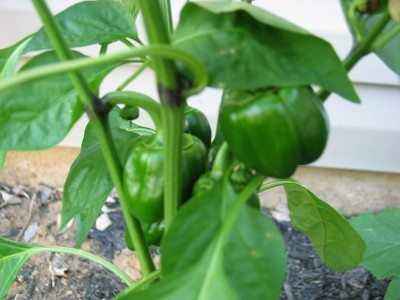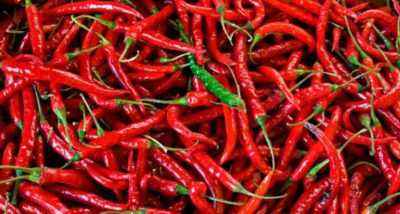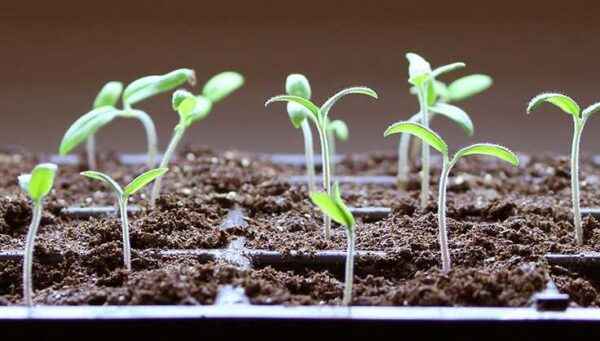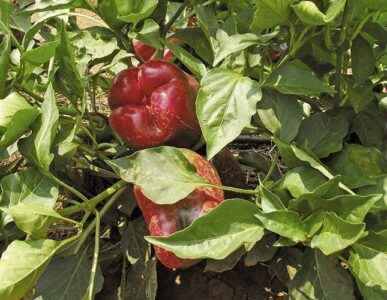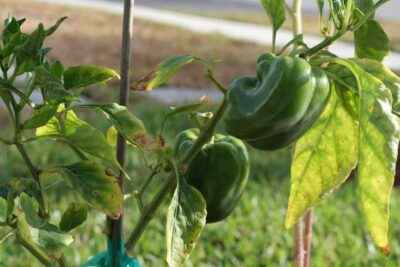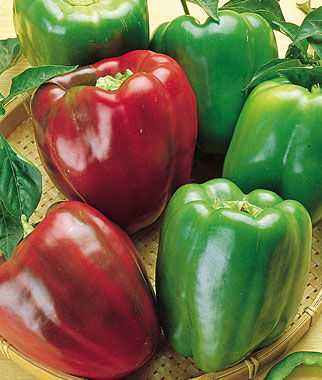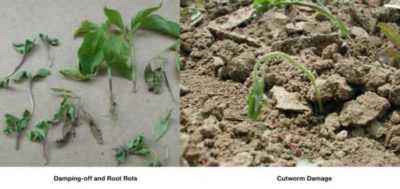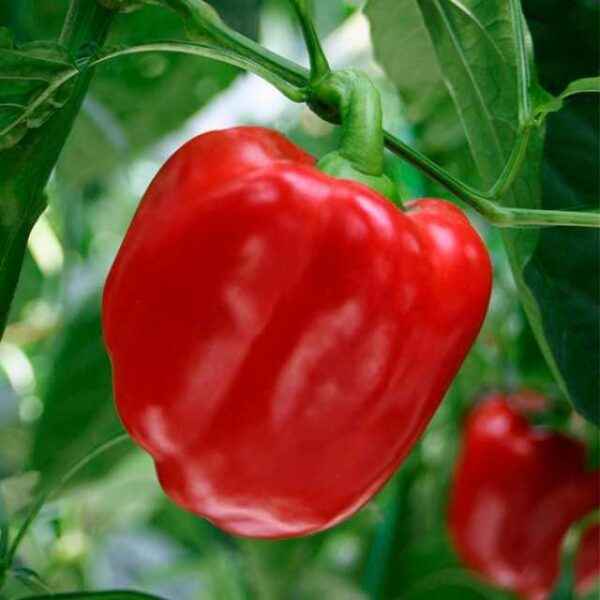When choosing seeds for sowing, give preference to high-yielding varieties. Consider the best varieties of bell pepper.
- Hercules
- Bush <
- Fruits
- Advantages
- Claudio F1
- Bush <
- Fruits
- Advantages <
- Mercedes
- Bush <
- Fruits
- Advantages
- Atlas
- Bush
- Fruits <
- Advantages <
- Athlete
- Bush <
- Fruits <
- Advantages <
- Cow’s Ear
- Bush <
- Fruits
- Advantages <
- Yellow bell
- Bush <
- Fruits
- Advantages <
- California miracle
- Shrubs
- Fruits
- Advantages <
- Conclusion
Hercules
It got its name for the impressive type of vegetables.
Ripening dates are medium early. Fruits can be consumed 3 months after emergence. Cultivate on open and protected soils.
Bush
The plant is compact, semi-spreading, powerful. Its height is 0.5 m. Well leafy.Leaves are green, slightly wrinkled, medium in size.
Fruits
Fruits on the bushes are drooping. The shape resembles a cube, slightly oblong, ribbed:
- length is about 12 cm, width – 11 cm, wall thickness – 7-9 mm .;
- weight of vegetables – 200- 300 g .;
- the skin is dense, smooth;
- at the stage of technical maturity has a deep green color.
After 20 days, the peppers enter phase of biological maturity and acquire a deep red tint. The pulp is juicy, fleshy. The taste is sweet, there is no bitterness. The aroma is pleasant. Salads are prepared from them, canned, stewed.
Advantages
- good productivity – 2-3.5 kg of fruits per 1 sq. Km. m with proper care;
- large-fruited;
- the ability to transport over long distances;
- can withstand adverse weather conditions;
- excellent safety;
- immunity to tobacco mosaic virus;
- versatility of consumption.
Claudio F1
Dutch hybrid view. One of the most common.
Refers to the very early. The growing season lasts 72-80 days. Vegetables may ripen later, depending on the region. They are grown both in film shelters and in open areas of land. The crop grows better on protected soils.
Bush
The plant is powerful, semi-spreading. After planting, you need to tie and stepchild.It grows up to 1 m. In greenhouses – up to 1.2 m. There are many leaves. They are dark green, slightly wrinkled, large. From the bush you can collect up to 12 peppers at the same time, after the second flowering – up to 5.
Fruits
Fruits are elongated, cuboid, drooping.
- have 4 cameras;
- the average weight is 175 g. Some specimens can reach 250 g .;
- wall thickness – 10 mm .;
- the skin is dense, glossy, not hard ;
- the color at the initial stages of ripening is green, then it becomes dark red;
- the flesh is juicy, piquantly sweet, fleshy;
- the aroma is fresh, pepper.
Vegetables are harvested in green, so they can be stored for up to 60 days. Completely ripe do not lie for a long time, so it is better to eat them right away. Suitable for salads and canning.
Advantages
- good yield – 300 centners per 1 ha;
- high germination of seeds – 97- 100%;
- stress and heat resistance;
- does not stop development in adverse weather conditions;
- has immunity to viral diseases;
- tolerates long transportations.
The disadvantages include the fact that from technical to biological maturity it takes about 3 weeks. The period can be shortened if part of the leaves and small ovaries are removed from the bush.
Mercedes
One of the most common Polish varieties of sweet pepper.
Variant of the name of the Mercedes variety. Ripening early – the first fruits can be obtained in 105-115 days after germination of the culture. Grown in film shelters and in unprotected areas.
Bush
Stump bush. It grows to an average height, which is 60-65 cm. Tie 15-20 quality ovaries at the same time.
Fruits
Fruits have the shape of a cone.
- length – 15-20 cm, width – 6-7 cm .;
- weight is from 160 to 220 g .;
- wall thickness – 7-9 mm .;
- the pulp is juicy, fleshy;
- the taste is sweet. The aroma is pleasant.
Salads are prepared from the fruits of technical maturity, they make various kinds of preservation, they are frozen.
Advantages

The variety has a high yield
- high yield – 3.5 kg peppers with 1 square. m .;
- disease resistance;
- versatility of purpose;
- presentable appearance;
- transportability;
- great taste.
Atlas
An early ripe variety. You can eat vegetables 110 days after the appearance of pepper sprouts.
After 20 days, the fruits ripen completely.
Bush
The bush is compact, not very sprawling. The height reaches 70 cm. The foliage is weak.
Fruits
Peppers have the shape of a truncated pyramid.
- large – length up to 26 cm, width up to 8 cm .;
- wall thickness 5-7 mm .;
- have 2-3 chambers, there are many seeds inside;
- the skin is smooth, shiny.
From the technical to the biological stage, the color changes from light green to bright red. The pulp is medium density, very juicy. It has one of the sweetest tastes.
Advantages
- high productivity – from 3 to 5 kg of peppers per 1 sq. Km. m .;
- the ability to harvest twice (the second is no less generous), if the seedlings are planted in time in the spring;
- resistance to the main diseases of the culture;
- large-fruited;
- presentation;
- versatility of destination – thanks to juiciness they even prepare medicinal juices.
Bogatyr
Mid-season appearance. From the appearance of sprouts to the stage of technical maturity of the fetus, it takes about 125-135 days, to full maturity – 145-160 days.
Grown both in greenhouses and in unprotected soils.
Bush
The bush is powerful, medium-sized, spreading. Its height is 55-60 cm. The leaves are large.
Fruits

Fruits are universal in use
The fruits of bell pepper have a conical oblong shape. All are about the same size. Weight is an average of 180 g. Wall thickness – 5 mm. Length – 10-11 cm. They have 3-4 cameras. Peppers are initially light green in color, when fully ripened, they acquire a bright red hue. Glossy leather. The surface is hilly. The pulp is fragrant, juicy, sweet. Universal use.
Advantages
- excellent yield indicators – you can collect up to 8 kg of fruits per 1 sq. Km. m .;
- is immune to verticillin wilt, late blight and the tobacco mosaic virus;
- a high percentage of seed germination;
- tolerates frost well;
- transportability over long distances;
- long-term safety at home at low temperatures.
Cowskin ear
Representative of the best types of bell pepper. Widespread.
Medium early. Fruits can be consumed 4 months after seed germination. The variety is grown under film shelters and in open areas.
Bush
The bush is of medium height – up to 70 cm spreading. This feature must be considered before planting seedlings. It is worth maintaining a distance of 50 cm between the bushes.The leaves are large, which makes the plants poorly tolerate heat.
Fruits
Fruits are cone-shaped, oblong, corrugated.
- resemble cow’s ear, which is why the species got its name;
- peppers reach 12-16 cm in length .;
- the largest specimens have a weight of 200-250 g, average figures are 150 g. ;
- wall thickness of 6-8 mm .;
- the skin is glossy, dense;
- the color of the fruit changes from dark green to deep red;
- meat is fleshy, juicy, without bitterness.
Salads, lecho, headlights are prepared from fruits of technical maturity they are stewed, stewed.
Advantages
- good yield – 2-3 kg of peppers are collected from 1 bush;
- has immunity to viral diseases;
- long-term safety;
- the ability to transport without loss of presentation.
There is a cow ear and some disadvantages. Seed germination is not very high. Also, the culture does not tolerate heat and low temperatures. You should not plant hot peppers nearby, as dusting is possible. Then the taste may have bitterness.
Yellow bell

The variety will delight you with an early harvest
The variety is early ripe – it takes only 100-107 days from germination to the first harvest.
You can grow in greenhouse conditions and in open fields.
Bush
The bush is semi-spreading, medium-sized. In height reaches 70-75 cm. The average density. The leaves are small, slightly wrinkled, green.
Fruits
Fruits are drooping, prismatic, resembling an inverted bell.
- length reaches about 10 cm , the diameter is the same;
- wall thickness – up to 10 mm .;
- have 3-4 faces. Weight – 120-170 g .;
- the skin is very shiny;
- peppers during the period of technical ripeness of green, in biological – bright yellow;
- juicy flesh , fleshy;
- the taste is sweet, without bitterness.
The best use of fruits is salads, hot dishes, preserves.
Advantages
- excellent yield indicators – up to 8 kg per 1 sq. km. m .;
- high taste;
- does not stop fruiting at low temperatures;
- good keeping quality;
- transportability;
- immunity to tobacco mosaic virus and potato virus.
California miracle
Mid-season variety – vegetables ripen in 72-75 days after planting.
Cultivated in greenhouse conditions and in open areas. For cultivation, the middle strip and Northwest Russia are suitable.
Bushes
The bush is medium-sized, sprawling, with powerful branches and a trunk. Height can reach 70 cm. From each bush from 7 to 12 vegetables are tied.
Fruits
The fruits are cube-shaped.
- the surface is ribbed;
- the mass is 80-160 g. ;
- wall thickness of 6-8 mm .;
- have 4 cameras;
- the skin is dense, shiny and smooth.
Color in technical ripeness is green, in biological – bright red. The pulp is fleshy, juicy, elastic. Characteristic special sweet taste and pleasant aroma. Therefore, the best use of peppers is fresh, but also used for stewing and canning.
Advantages
- good yield – about 3 kg per 1 sq. m .;
- stress resistance;
- is immune to diseases;
- high sugar content in fruits – more than 2 times more than other varieties;
- excellent ovarian qualities;
- unpretentiousness in leaving.
Conclusion
The varieties under consideration will give guaranteed good results subject to all agrotechnical rules. It is also worth considering the conditions of the region in which the pepper will be cultivated.
